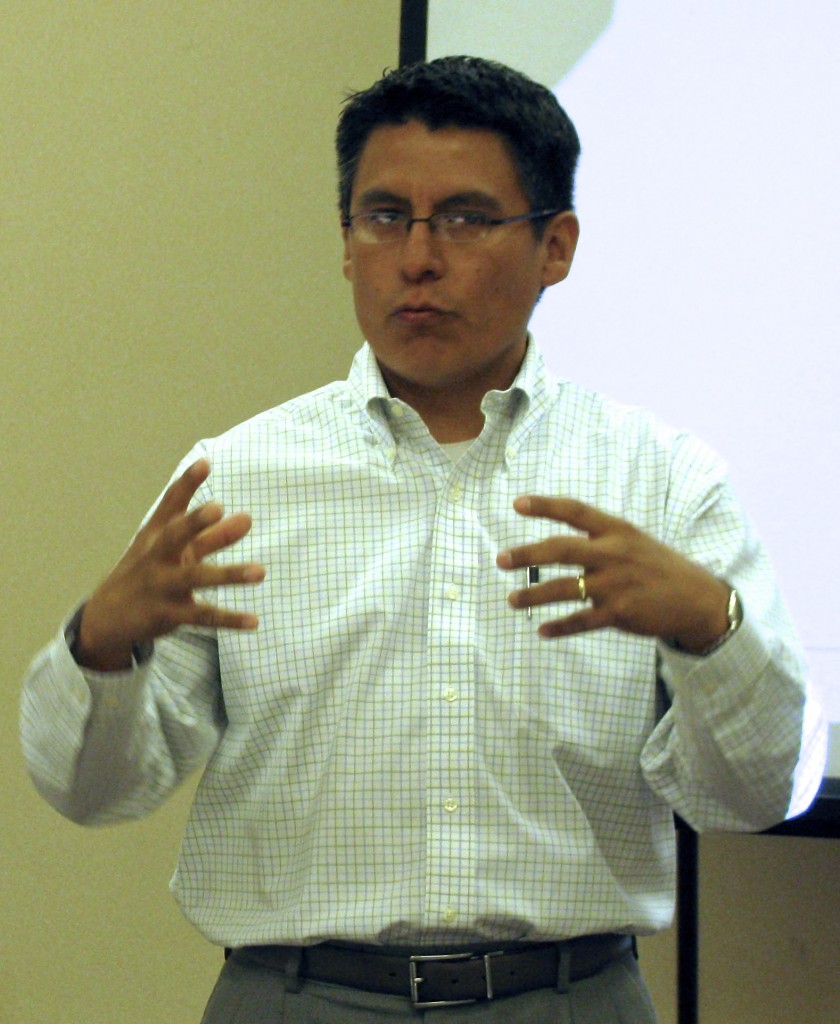 I do a lot of group facilitation, day long or multi-day sessions with people with big titles in the room trying to do the seemingly impossible (really!). After a string of such engagements I’ve been reflecting on a few confessions I’ve never shared. I hope to hear from other professional facilitators about your experience and why not, your own confessions. I also hope to help those just getting started in the field and practice of facilitation which is so enriching, professionally satisfying, and sorely needed in most organizations. So, just between us, here are a few of my confessions…
I do a lot of group facilitation, day long or multi-day sessions with people with big titles in the room trying to do the seemingly impossible (really!). After a string of such engagements I’ve been reflecting on a few confessions I’ve never shared. I hope to hear from other professional facilitators about your experience and why not, your own confessions. I also hope to help those just getting started in the field and practice of facilitation which is so enriching, professionally satisfying, and sorely needed in most organizations. So, just between us, here are a few of my confessions…
The SmartChange™ Blog
What Washington Can Teach Us About Organizational Change
While our politicians argue and fight about what needs to be done about healthcare and the national budget, I am reminded of how easy it is to pick and choose information and facts to build a case and make a point, to attempt to influence people’s thinking, to create enemies to be conquered rather than colleagues to be valued and listened to.
Why Are They Staring At Me Like That?
 Once, working with a group of subject matter experts (SMEs), I asked a very straightforward question: “How can we improve customer service?” They stared at me like I had just spoken a foreign language! The problem is that often, the typical open-ended, logical, straightforward question does not result in the robust, focused, productive dialogue we want. For better results, try asking a facilitative question.
Once, working with a group of subject matter experts (SMEs), I asked a very straightforward question: “How can we improve customer service?” They stared at me like I had just spoken a foreign language! The problem is that often, the typical open-ended, logical, straightforward question does not result in the robust, focused, productive dialogue we want. For better results, try asking a facilitative question.
Why a Get-down-to-Business Approach Isn’t’ Enough?
A chief executive flies in to have a skip-level meeting with the troops. Naturally he wants them to feel free to open up to him and share things that would help him be a better leader. The time is limited, and of course in addition to ‘hearing them out’ he also has a handful of slides he wants to share with them – his vision, the strategy, the top priorities, and how employees can contribute. All good information, all well-intended. So, looking at the clock, he gets down to business! After he leaves, comes the meeting-after-the-meeting with your colleagues and you realize that nobody felt totally comfortable speaking their minds with the boss.
7 Sure Ways to More Effective Meetings
The USA article “Tame the meeting beast with these 8 tips” sheds light on something most of us already know: much of our time spent in meetings is a waste of time!
When you consider that we spend a great part of our time in meetings (what else is a work day but an endless series of meetings?), 50% waste is a huge misuse of organizational resources!!
Three Proven Strategies for Successful Group Dialogue
 |
| Image by David Castillo Dominici |
I recently contributed this article to Leadership Strategies, based on a previous post on The Role of the Six Sigma Black Belt as a Facilitator. This version is for a broader audience and explores three proven strategies for successfully facilitating productive group dialogue.
In the world of continuous and process improvement, practitioners range from quality engineers, to lean specialists, to six sigma black belts (and green belts), to a variety of other titles and labels. They all share certain things in common:
Facilitation as a Key Intervention for Organizational Change
As I prepare to attend the International Association of Facilitators Conference in Denver (one of my favorite professional conferences!) I remember presenting at this same conference (but in Europe a couple of years ago) on the topic of Facilitation as a Key Intervention for Organizational Change.
The Role of the Six Sigma Black Belt Part V: The Facilitator
This is part of the series The Role of the Six Sigma Black Belt. The concepts and ideas presented also apply to other improvement professionals and leaders implementing improvements in an organization.
The Facilitator Role
To illustrate this role picture this. I was with a team of IT programmers to develop a SIPOC (a tool that identifies the inputs, outputs, suppliers, and customers for each step of a process) of the testing process for new software. So, I asked a very straight forward and logical question…”what are the process steps for testing new software?”
I was surprised when the group seemed stumped. It’s not that they didn’t know the answer. They were subject matter experts. They knew how to test software. So I asked the same question again. Twice. With the same response…none!
The Role of the Six Sigma Black Belt Part IV: The Leader
This is part of the series The Role of the Six Sigma Black Belt. The concepts and ideas presented also apply to other improvement professionals and leaders implementing improvements in an organization.
The Leader Role
This example illustrates this critical role. In one project I followed closely, the BB worked hard to earn the trust and respect of a team of front line workers who made electrical harnesses for aircraft. These were union employees who typically did not mingle with “management” types like a BB (even though BBs didn’t really didn’t manage people but that was the generic label for anyone not covered by a union contract), but they had managed to learn from one another and now they were developing a new training program as a pilot for a larger training effort within the union-covered workforce. The union employees even got to go on a “benchmarking” trip to a local company as part of the effort. It was unheard of for union employees to be involved in such activities but they loved the work and when faced with the expected criticism from fellow union members for hanging out with “management” people, they effectively defended their position and continued their work. This small band of unlikely friends (that’s what they had become) had bonded in such a way that even years after the BB had moved on to another division, they kept in touch and he would come by their shop whenever he was in town.



